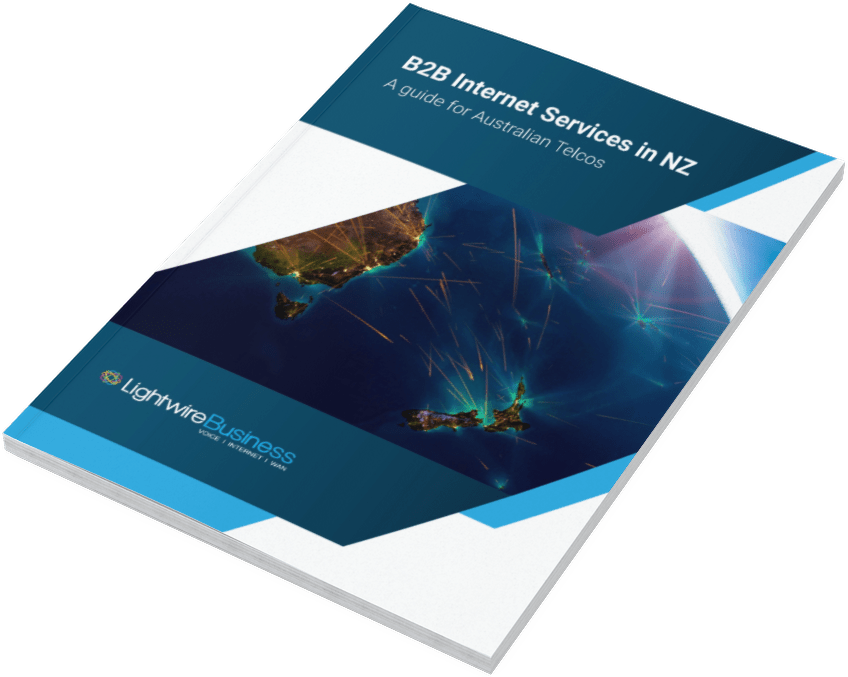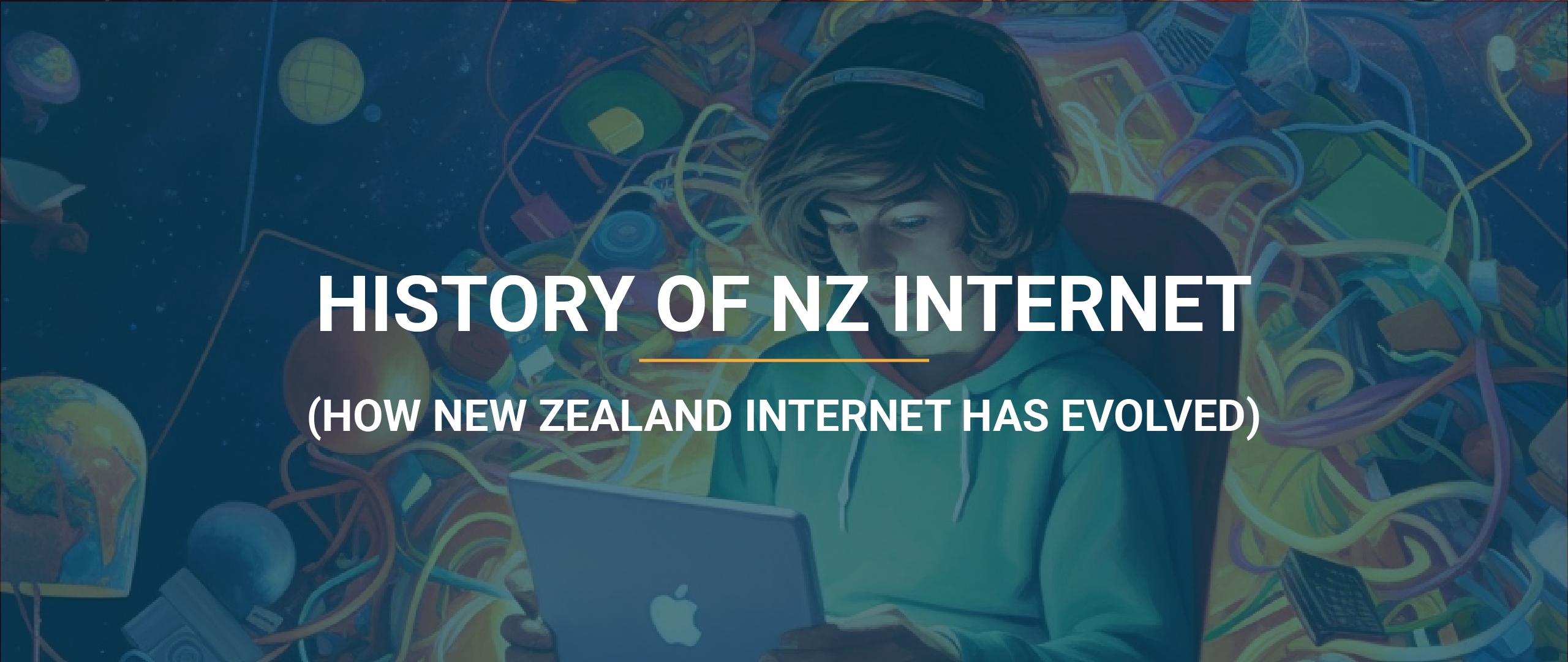The internet has revolutionized the way people live, work, and interact globally, and New Zealand is no exception. Over the years, New Zealand has witnessed a remarkable evolution in internet connectivity, transforming various sectors and creating new opportunities for social and economic growth.
From dial up to the blazing fast Hyperfibre, internet speeds have skyrocketed, and in this blog post, we explore the key milestones of New Zealand Internet history.
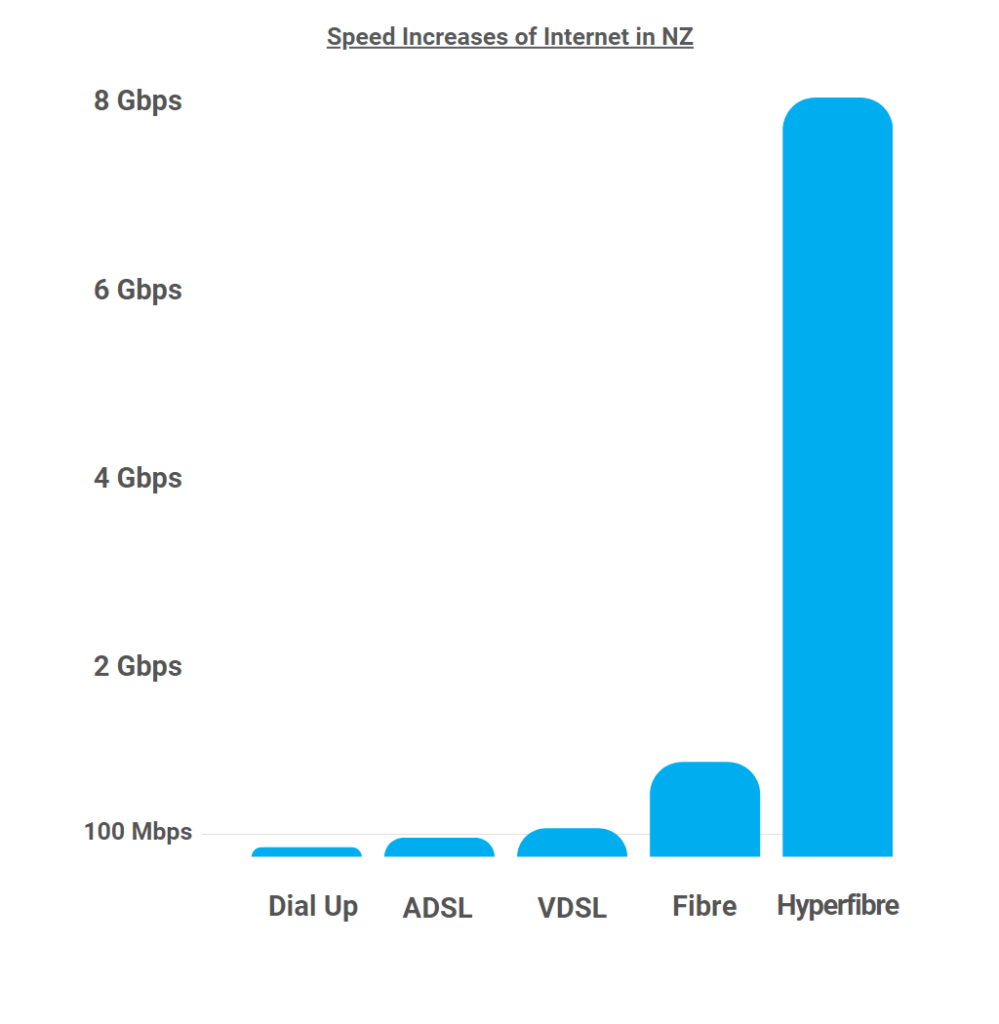
In 1989, New Zealand got its first international internet link, which allowed us to join the global network of interconnected computers. And with it internet was introduced to Kiwis, and the role of the first internet service providers (ISPs) was crucial in providing access to this new digital realm. ISPs such as Xtra (now Spark) and ihug (now part of Vodafone) emerged as pioneers, offering dial-up connections that allowed individuals and businesses to connect to the internet.
Dial-up: This was the first type of internet connection available in New Zealand, and it was launched in the early 1990s. It offered speeds of up to 56 kbps (kilobits per second). Recognisable by its distinct series of beeps, screeches, and static-like noises that played through the computer’s speakers during the process of establishing a dial-up connection. Here’s a sound clip for that nostalgia hit:
During this early adoption phase, New Zealanders began to embrace the internet, albeit with the limitations of dial-up connections. The internet was primarily used for email communication, basic web browsing, and accessing online resources. The concept of social media, video streaming, and other modern online activities were still distant possibilities.
Despite the limitations, the enthusiasm for the internet grew rapidly, and businesses started recognizing its potential for e-commerce and digital marketing. The early adoption phase set the foundation for subsequent advancements in internet connectivity and laid the groundwork for the interconnected world we know today.
One major milestone in this evolution was the transition from dial-up to broadband internet. Dial-up connections, with their limited speeds and phone line dependency, started to give way to faster and more reliable broadband connections in the early 2000s. Broadband internet provided users with always-on connectivity and significantly improved download and upload speeds compared to dial-up.
Asymmetric Digital Subscriber Line (ADSL) was introduced in New Zealand in 2001. Offering faster download speeds than dial-up, ranging from 256 kbps to 24 Mbps (megabits per second), depending on the plan. Very-high-bit-rate Digital Subscriber Line (VDSL) was launched in New Zealand in 2011. Offering faster speeds than ADSL, ranging from 30 Mbps to 70 Mbps.
Building upon the success of Broadband, the New Zealand government initiated the Ultra-Fast Broadband (UFB) program in 2009. The UFB initiative was a major infrastructure project with the goal of bringing fibre-optic broadband to 75% of New Zealand’s population.
Click here to learn more about what UFB is in greater detail.

The government partnered with several Local Fibre Companies (LFCs) to lay fibre-optic cables nationwide to bring high-speed fibre-optic internet connectivity to homes and businesses across the country. Some of the early participants in the UFB initiative include:
- Chorus: The first LFC to join the UFB initiative and played a significant role in deploying fibre-optic networks nationwide. They also control the network in Auckland and Wellington.
- Enable Networks: The LFC that operates in the Christchurch area.
- Northpower: The electricity distribution company that also provides fibre-optic services in the Whangarei area.
- Ultrafast Fibre/Tuatahi First Fibre: The LFC dedicated to deploying fibre-optic networks in central North Island, including cities such as Hamilton, Tauranga, and New Plymouth.
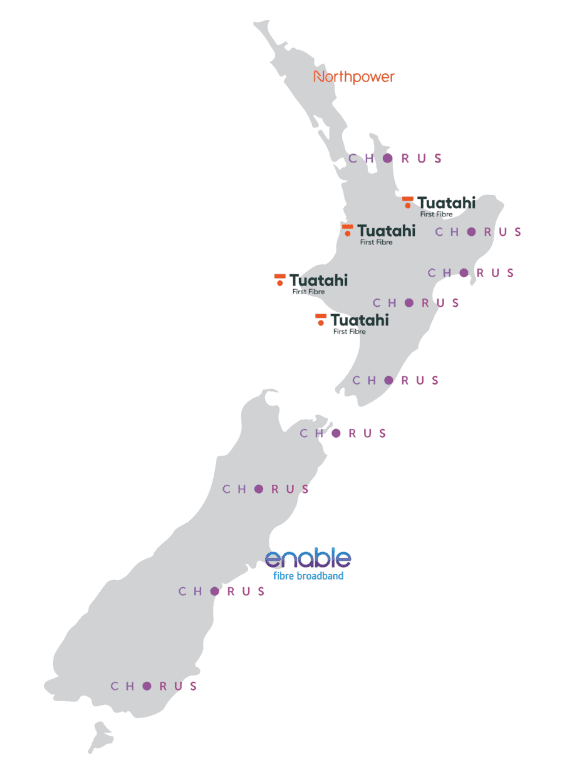
These local fibre companies, along with other regional providers, worked in collaboration with the New Zealand government and the Crown Fibre Holdings (CFH) to roll out the UFB initiative. Together, they played a vital role in expanding fibre-optic infrastructure and bringing ultra-fast broadband connectivity to various parts of New Zealand.
Ultra Fast Broadband (also commonly referred to as Fibre) offers some of the fastest internet speeds available and nowadays is the bread and butter of New Zealand internet connectivity with speeds ranging from 100Mbps to 1Gbps, depending on the plan.
UFB services has multiple service classifications, bitstream 2, bitstream 3, and bitstream 4. You can read about the different UFB service classifications and what they mean here.
In addition to the UFB program, the New Zealand government recognized the need for improved internet access in rural and remote areas. To address this issue, the Rural Broadband Initiative (RBI) was launched in 2010.
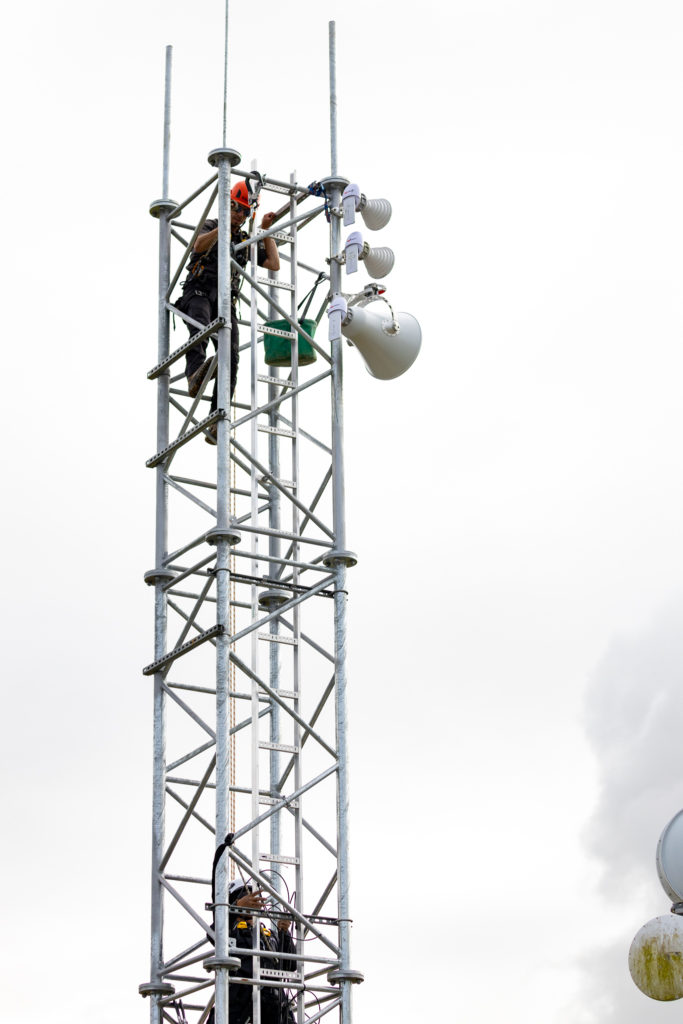
The RBI focused on extending broadband coverage to underserved rural communities, where traditional infrastructure deployment was challenging. The program utilised a combination of fixed-line, wireless, and satellite technologies to provide connectivity to these areas.
The RBI has been instrumental in bridging the digital divide, enabling rural residents and businesses to access high-speed internet and participate in the digital economy.
Lightwire Rural is one of those companies that connects rural households and businesses throughout the Waikato and Bay of Plenty. With that plug out of the way lets continue.
The latest evolution in the New Zealand internet space is Hyperfibre – the internet service first launched by Chorus and quickly followed by the other major LFCs enables speeds of up to 8Gbps, making it the fastest internet service available (with the exception of customised fibre builds like Dark Fibre).
However it’s worth noting that Hyperfibre is a relatively new product, and not all areas in New Zealand have access to Hyperfibre or the full speeds that Hyperfibre offers yet.
Check out this blog post if you want to learn what Hyperfibre is.
It’s important to note that internet speeds can vary depending on factors such as the specific technology used, the quality of the infrastructure in a particular area, network congestion, and the specific internet service plan subscribed to by the user.
Become a NZ Internet Pro
Read the guide to get up to speed on everything from high-level market intel to service specific details and all the gotchas in between. No Forms, no calls – 100% free
